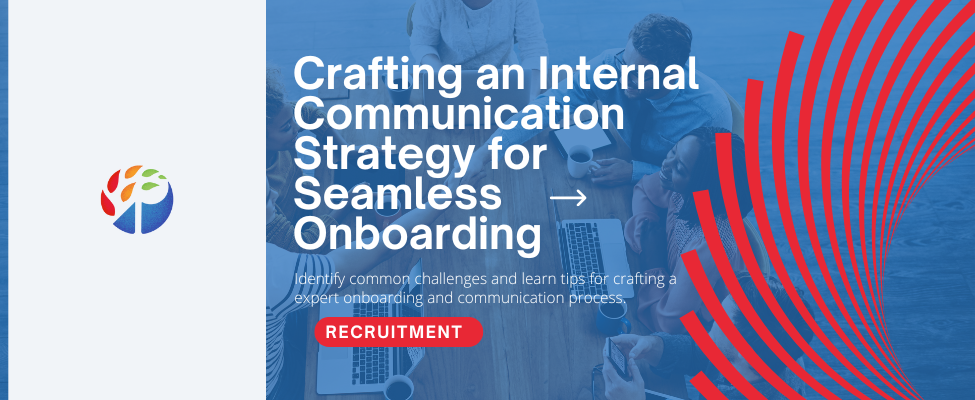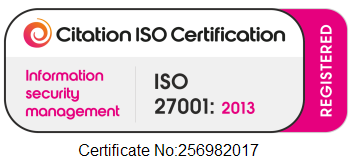Crafting an Internal Communication Strategy for Seamless Onboarding
How do you ensure a successful onboarding process? What role does communication play in integrating new employees into the team? And how can technology assist in streamlining the onboarding process?
Leading human capital management research and advisory firm Aptitude Research describes talent acquisition (TA) as “one of the most complex areas of HR technology.” Impacted by the pandemic and the changing labour market, it has transformed into a strategic business enterprise with its technological framework. The company found that 73% of organizations increased their spending on TA technology in 2022, and 52% have plans to increase their investment during 2023. Additionally, priorities have shifted, and an increasing number of businesses are focusing on the quality of their workforce, including long-term commitment rather than just experience and efficiency.
In this article, we will identify common challenges often encountered during the process, and offer tips on how to create a constructive internal communication strategy. Moreover, we’ll look into how technology can be utilised to make the onboarding process seamless and effective.
The Importance of Onboarding and Internal Communications
Onboarding represents a critical point in an employee’s journey in an organisation. It not only equips new employees with the necessary knowledge and skills to perform their jobs, but also sets the tone for their overall experience with the company. Thorough onboarding processes are central to crafting a strong company culture and fostering high employee engagement.
Nevertheless, successful onboarding communication goes beyond giving an employee handbook to new hires. An effective internal communication strategy is the key that holds this process together. It helps new employees assimilate into their roles quicker, making them an integral part of the team and also the company’s internal communication plan.
But, according to Gallagher’s State of the Sector 2022/23 report, 71% of companies do not have a comprehensive long-term internal communication strategy. Their research also reveals that 60% of internal communicators concentrate on developing communication plans tailored for specific campaigns rather than formulating more encompassing strategies.
Internal communication helps evolve the sense of being part of a community among employees. Whether it’s through a company newsletter, daily briefing, or a branded internal comms app, effective internal communication can make employees feel valued and involved.
One of the values of communication apps is that they can be used to support onboarding, performance management, and training.
Common Challenges in Onboarding
The process of onboarding, while crucial, is often fraught with challenges. One of the most common is unstructured communication. The lack of a targeted internal comms strategy can lead to information overload for new hires. Or worse, essential details may be communicated ineffectively, leading to misunderstanding or misinterpretation of information.
Failing to cater to the needs of remote workers during the onboarding process can also prove to be a significant hurdle. Remote work is becoming more common, and organisations’ internal communication methods need to adapt to this changing paradigm. Ensuring that all materials and communication channels are accessible and effective for remote workers is essential to counter this challenge.
Another common issue is the lack of feedback mechanisms. New hires are often left to navigate the process themselves with little to no opportunity for questions or clarification. This issue can be addressed by regular check-ins through the onboarding process or via pulse surveys.
Crafting an Effective Communication Strategy
To address common onboarding challenges, the creation of a well-established internal comms strategy becomes paramount. The first step in building an effective communications strategy is mapping out the communication goals aligned with the company’s overall objectives. From there, internal communicators and HR professionals can create a comprehensive internal communication plan.
A well-crafted internal communication strategy should involve multiple communication channels to ensure all employees are reached effectively. This can include anything from traditional methods like email and intranet sites to employee apps and social media platforms.
Another crucial factor to consider while formulating a strategy is bringing in the human aspect. Regardless of the communication tools used, it’s essential for the message to be delivered in an engaging, approachable, and human-centric manner. Introducing more casual interactions, like a weekly gathering in the conference room, not only creates better engagement but also helps to establish a more open and trusting company culture.
Utilising Technology for Seamless Onboarding
As businesses gear up for the future of work and invest in transforming their talent, onboarding is frequently neglected. According to Aptitude Research, onboarding is only a priority for 26% of companies, and 42% don’t have dedicated onboarding solutions.
The digital age has revolutionised how companies operate, and onboarding should not be an exception. Implementing electronic communications tools like an internal communications app or software can streamline the process. It can also create a smooth onboarding experience for new employees, irrespective of location.
Author’s Bio
Tarek Kamil is CEO and Founder of Cerkl, an AI-powered platform that elevates internal communications. As a passionate tech enthusiast and entrepreneur, Tarek strives to create innovative solutions that positively impact the digital world. With a passion for blending technology and creativity, he aims to inspire and make a difference through his ventures.




Comments are closed